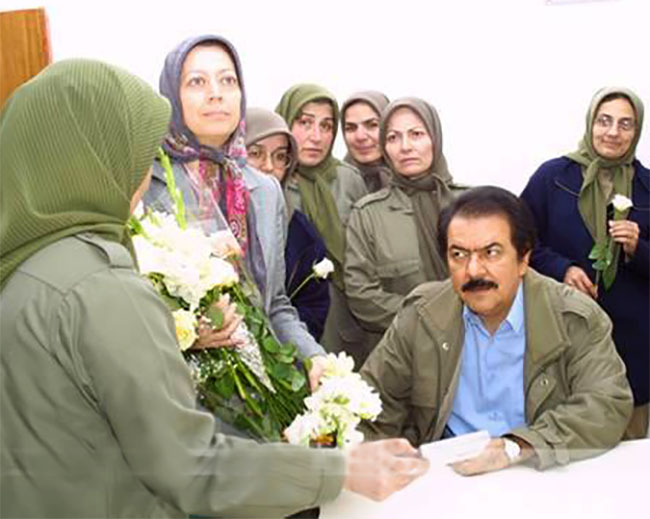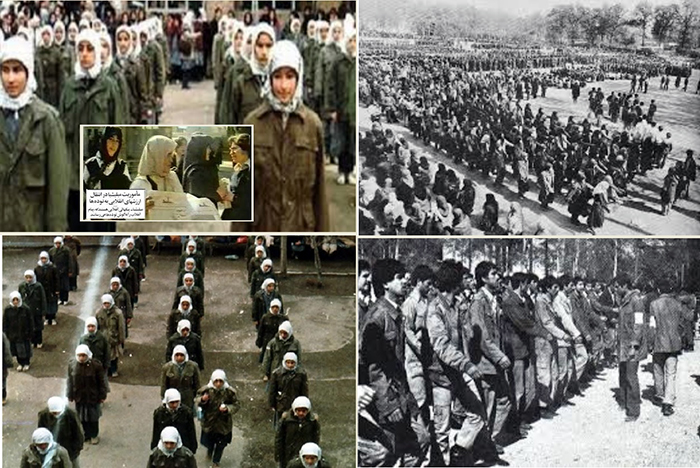Family is a group of persons united by ties of marriage, blood or adoption constituting a single household interacting and inter-communicating with each other. Leaders of destructive cults tend to break all these ties, interactions and intercommunications of families of their followers. This is exactly what the Mujahedin Khalq Organization (the MKO/ MEK/ PMOI/ Cult of Rajavi) committed against the concept of family during its entire history.
After the 1979 revolution of Iran, Massoud Rajavi took over the group in the absence of main leaders of the group who were executed by the Shah’s security forces. The rule of Massoud Rajavi over the MEK ruined the total center of family in the MEK.”Rajavi liked having women around him and overhauled the command structure to replace the men with women — this time calling it a ”constitutional revolution.”, Elizabeth Rubin wrote in June 2003 after her visit to Camp Ashraf, Iraq. She had been allowed by the MEK authorities to enter their camp covering a report about the Mujahedin in Ashraf. However, her investigative report titled”the Cult of Rajavi”, turned out to expose horrible facts about the cult-like relations inside Camp Ashraf.

Rubin states that the MEK leaders”like to boast”that”the Mujahedeen is a family affair”. She quotes the cult leaders saying”We have three generations of martyrs: grandmothers, mothers, daughters”. Then Rubin tries to shed light on how the third generation was involved with the MEK affairs. She investigates about”a dozen young women commandos who trotted with their Kalashnikovs on a scrubby field, camouflage leaves and twigs bouncing on their helmets, their faces blurred by green paint.”
“Most of the girls I was meeting had grown up in Mujahedeen schools in Ashraf, where they lived separated from their parents,”Rubin writes about the life of children at Camp Ashraf.”Family visits were allowed on Thursday nights and Fridays. When Iraq invaded Kuwait, many of these girls were transported to Jordan and then smuggled to various countries — Germany, France, Canada, Denmark, England, the United States — where they were raised by guardians who were usually Mujahedeen supporters.”
To realize why these girls”decided”to get back from Europe to Iraq, she refers to the testimonies of the first female defector of the MEK, Nadereh Afshari. She was one of the teachers and instructors of Mujahedin children in the group’s school in Iraq and then in the group’s pension for children in Germany. She was also one of the group’s officials to transfer children from Iraq to Europe.
“When they were 18 or 19, many of them decided to come back to Iraq and fill the ranks of the youngest Mujahedeen generation,”Rubin asserts.”Though ”decided” is probably not the right word, since from the day they were born, these girls and boys were not taught to think for themselves but to blindly follow their leaders.”

”Every morning and night, the kids, beginning as young as 1 and 2, had to stand before a poster of Massoud and Maryam, salute them and shout praises to them,” Nadereh Afshari told Rubin.”When the German government tried to absorb Mujahedeen children into their education system, the Mujahedeen refused. Many of the children were sent to Mujahedeen schools, particularly in France. The Rajavis saw these kids as the next generation’s soldiers. They wanted to brainwash them and control them.”
adereh Afshari and Elizabeth Rubin were two of the early people who denounced the MEK as the destructive cult of Rajavi that violates the most basic rights of its members especially the female ones. It did not take so long that other female defectors of the group revealed facts on the life of female members in the MEK. Batul Soltani’s famous testimony was like a bomb. She revealed the mass marriages of Massoud Rajavi with members of the Elite Council of the MEK. Batul, herself, was one of the victims of Massoud’s sexual abuse before she could manage to escape from the cult. The group authorities had forced her to divorce from her husband. They have separated her two children from her. Her daughter and son had been sent to Europe. She was not only deprived from a normal family life but also was forced to marry Massoud Rajavi as well as many other women of the group.
Consequently, several former female members of the group including Nasrin Ebrahimi, Zahra Mirbagheri, Zahra Moini, Maryam Sanjabi came out to put emphasis on testimonies of their ex-comrades. Their memoirs, articles, books and testimonies are all accessible. The evidences they present seem enough to bring the leaders of the Mujahedin Khalq to trial.
Mazda Parsi
